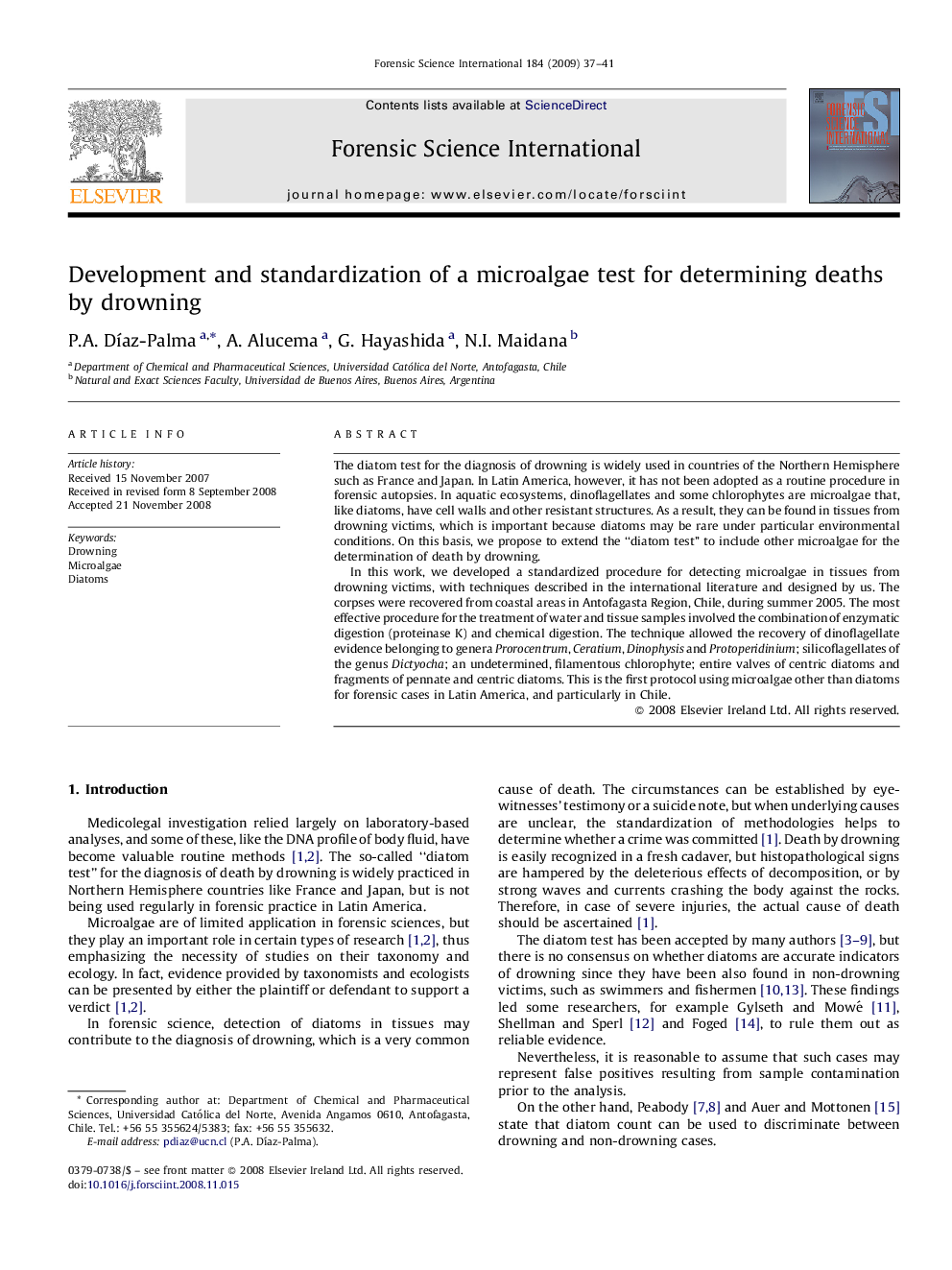| Article ID | Journal | Published Year | Pages | File Type |
|---|---|---|---|---|
| 97355 | Forensic Science International | 2009 | 5 Pages |
The diatom test for the diagnosis of drowning is widely used in countries of the Northern Hemisphere such as France and Japan. In Latin America, however, it has not been adopted as a routine procedure in forensic autopsies. In aquatic ecosystems, dinoflagellates and some chlorophytes are microalgae that, like diatoms, have cell walls and other resistant structures. As a result, they can be found in tissues from drowning victims, which is important because diatoms may be rare under particular environmental conditions. On this basis, we propose to extend the “diatom test” to include other microalgae for the determination of death by drowning.In this work, we developed a standardized procedure for detecting microalgae in tissues from drowning victims, with techniques described in the international literature and designed by us. The corpses were recovered from coastal areas in Antofagasta Region, Chile, during summer 2005. The most effective procedure for the treatment of water and tissue samples involved the combination of enzymatic digestion (proteinase K) and chemical digestion. The technique allowed the recovery of dinoflagellate evidence belonging to genera Prorocentrum, Ceratium, Dinophysis and Protoperidinium; silicoflagellates of the genus Dictyocha; an undetermined, filamentous chlorophyte; entire valves of centric diatoms and fragments of pennate and centric diatoms. This is the first protocol using microalgae other than diatoms for forensic cases in Latin America, and particularly in Chile.
